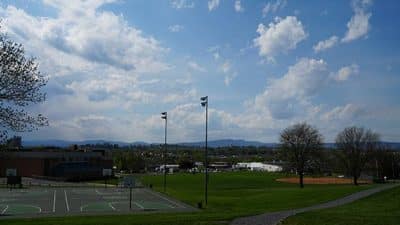
The survey was conducted by the USDA National Agricultural Statistics Service in early May. It includes information on Virginia’s winter wheat forecast and on-farm hay stocks and is the first indication of crop acreages for the 2018 growing season.
The majority of Virginia-grown wheat is soft red winter wheat, which is harvested in June.
Last fall farmers seeded 230,000 acres of wheat to be harvested for grain. Based on crop conditions as of May 1, and assuming a normal growing season, producers expect a yield of 67 bushels per acre, up one bushel from 2017. An additional 55,000 acres of wheat were planted last fall as a cover crop or to be cut for use as silage or hay.
“The Virginia winter wheat crop experienced below-normal temperatures and varied precipitation in April,” said Herman Ellison, NASS state statistician for Virginia. “At the end of April, 29 percent of the crop had headed and was mostly rated in good condition.”
Robert Harper, Virginia Farm Bureau Federation grain manager, said this year’s bump in winter wheat production is due in part to the normal cycle of crop rotation and the fact that prices were set based on last year’s futures.
“Many farmers planted more wheat acres for 2018 harvest because some production was priced when the futures market rallied $1 per bushel last June,” he explained. “Locking in the prices in 2017 made for more profitable prices in 2018.”
Harper added that “in general, Virginia farmers grow wheat as good as anyone else can on planet Earth. They know how, they have the right equipment and want to grow it.”
As of May 1, Virginia on-farm hay stocks totaled 250,000 tons, down 290,000 tons from May 1, 2017. Farmers have used 77 percent of their hay stocks since Dec. 1, 2017. A dry fall and late spring slowed grass growth, which meant livestock could not graze and needed to be fed hay.










